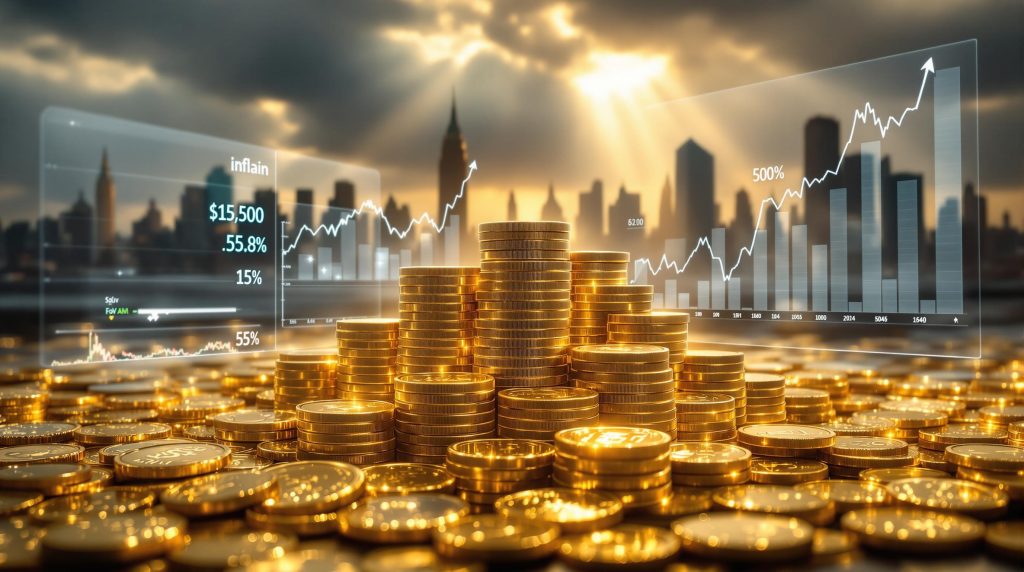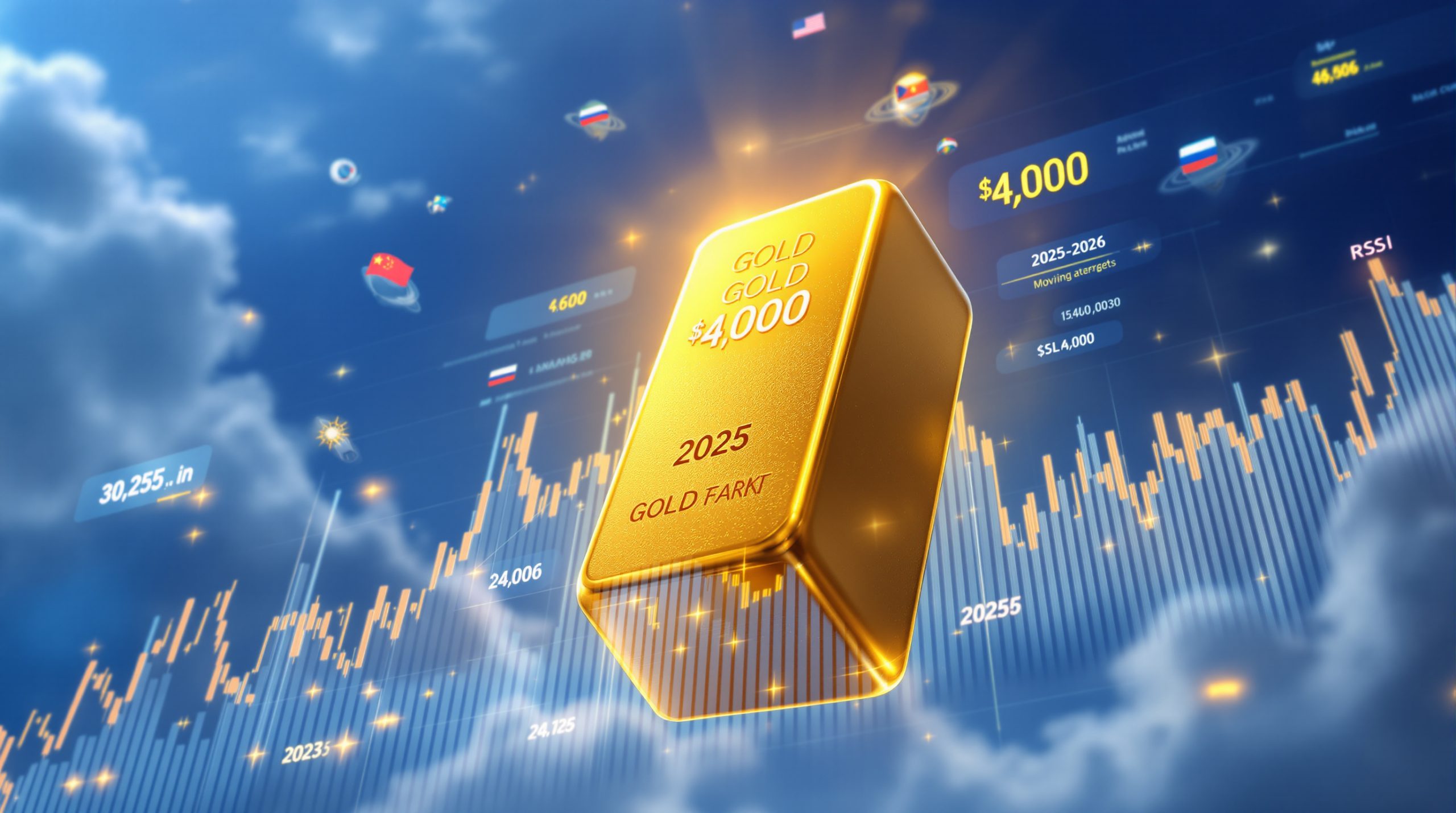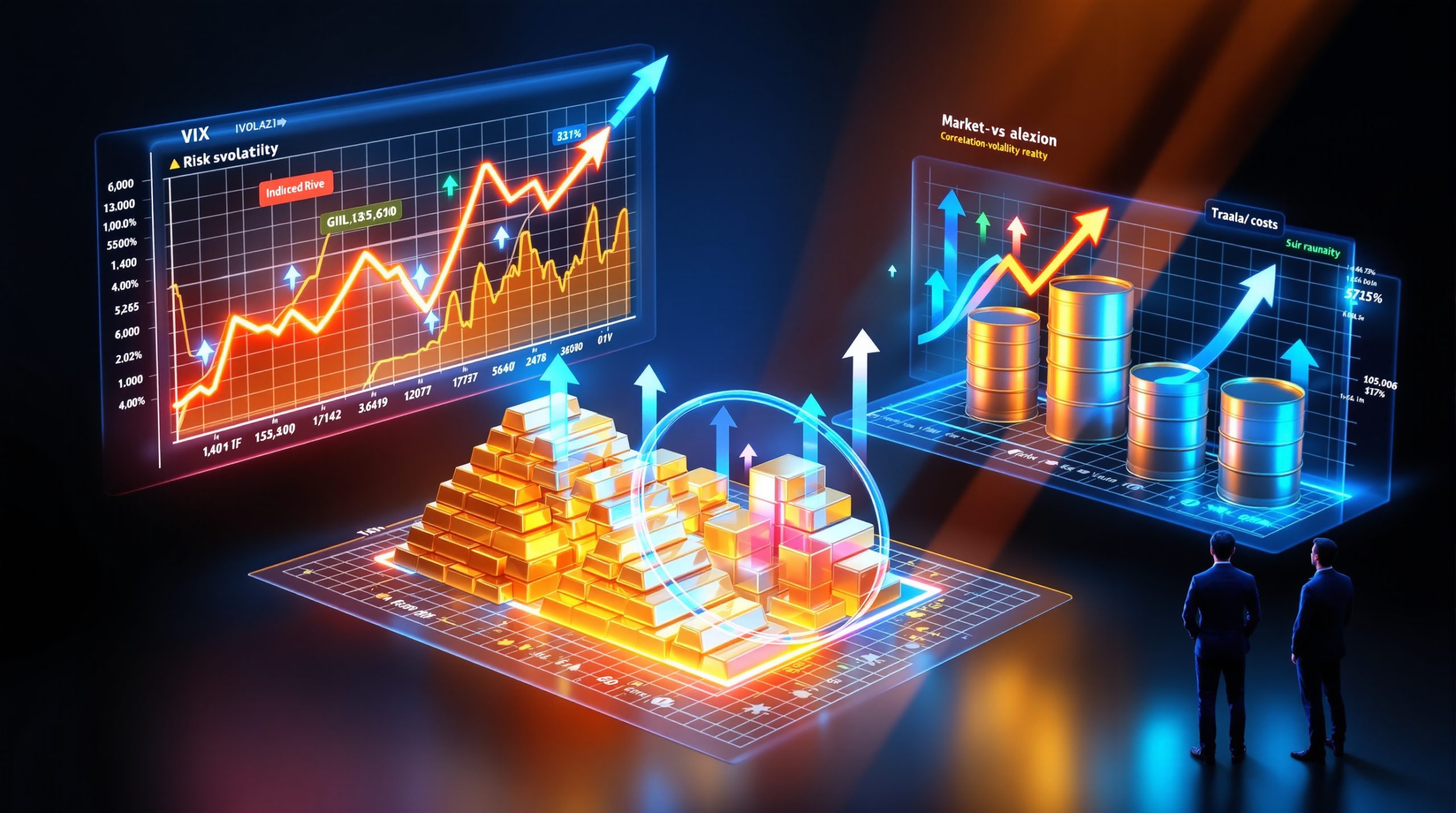Why Are Gold and Silver Considered Undervalued Assets?
Gold and silver have long been regarded as reliable stores of value, yet many analysts and seasoned investors argue these metals are currently undervalued compared to their historic roles and intrinsic worth. Understanding why requires a closer look at how markets for these assets function and the forces that drive their pricing.
Historical Price Suppression Mechanisms
Precious metals markets, especially in the United States, rely heavily on trading through paper contracts rather than physical metal exchange. One prominent venue for this is the COMEX, where "paper contracts far outweigh physical settled deliveries." As noted by Greg Manarino:
"The Crimex that you just referred to, ComX, Crimex, I mean, they're they deal in paper contracts, man. They're not dealing in real stuff. And once one just one big player demands physical delivery, it's over. The whole scam is going to blow up."
Key factors in perceived price suppression include:
-
High leverage in futures markets: Large volumes of paper contracts can be traded with only a fraction backed by real metal.
-
Institutional players set pricing: Major financial entities can shift price direction by managing contract volume, rather than through demand for physical metal.
-
Physical vs. Paper Market Discrepancy: The majority of transactions never result in physical exchange, blurring the true market value.
The disconnect between the physical and paper markets can, if exposed by a surge in physical delivery demand, drive rapid revaluation in favor of physical metal holders.
Current Valuation Metrics
Measuring whether gold and silver are undervalued involves several key metrics and contextual comparisons, including:
-
Gold-silver ratio analysis: Historically averages between 40:1 and 60:1; recent years have at times seen the ratio spike above 80:1, suggesting silver's relative undervaluation.
-
Purchasing power versus fiat currency: Gold and silver have preserved purchasing power over centuries despite fluctuations in global fiat currencies, highlighting their resilience as money.
-
Industrial demand and supply: Particularly for silver, industrial usage in electronics, solar panels, and medicine continues to rise even as mining output encounters cost and grade challenges.
-
Mining production costs vs. spot prices: With ongoing inflation in mining inputs and labor, production costs for both metals have trended upward, compressing profit margins and indicating potential upward price pressure.
How Is Inflation Affecting Precious Metals Markets?
Ongoing, persistent inflation is a key theme shaping gold and silver market trends. Investors are closely watching how precious metals respond to rapidly changing consumer price environments and currency devaluation.
Recent Inflation Trends
The most recent inflation data indicates a rapid acceleration:
"We got inflation report this morning telling us, well, guess what? It's still rising. In fact, at its fastest pace in six months." — Greg Manarino
This has broad implications:
-
Essential goods and services: The cost of food, housing, and energy continues to rise, eroding households' purchasing power.
-
Inflation-hedge narrative: Historically, when inflation surges, gold and silver have attracted capital as protective assets.
-
Historical precedent: During the 1970s stagflation, both metals delivered strong real returns as inflation overwhelmed traditional investments.
Currency Devaluation Effects
Rising inflation is almost always accompanied by currency devaluation, leading to:
-
Purchasing power erosion: Major currencies lose value against tangible assets and commodities.
-
Wealth transfer: Those holding assets outside of fiat systems (real estate, metals) preserve value while wage earners and fixed-income savers lose ground.
-
The Cantillon Effect:
"It's called the canthalon effect. I have I've been screaming from rooftops about this for how freaking long, right?" — Greg Manarino
This concept explains how new money created by central banks benefits those who receive it first (typically banks and financial institutions), widening wealth inequality. -
Strategic positioning: Investors aiming to shield themselves pursue more metal exposure and reduce reliance on weakening currencies.
What Is the Relationship Between Interest Rates and Precious Metals?
Interest rate environments have a significant impact on precious metal price action by influencing opportunity costs and currency dynamics.
Central Bank Policy Impacts
Central bank decisions directly correlate to gold and silver trends:
-
Loose monetary policy: Artificially low rates have historically buoyed asset prices but weakened currency strength, benefitting metals.
-
Strong policy responses:
"You need a corresponding rate of just high enough to do that. But we're getting the polar opposite. It's destroying our economy." — Greg Manarino
-
Volcker-era contrast: When the US adopted high interest rates in the early 1980s to stamp out inflation, gold price forecast models showed rates retrenching briefly before stabilizing at a higher baseline.
-
Current divergence: Market expectations of rate cuts and continued liquidity injections have increased demand for precious metals.
Strong vs. Weak Currency Scenarios
"When were the most prosperous times for the United States of America during times of artificially suppressed rates and weak currency or higher rates in a strong currency? It's a no-brainer, man. It's higher rates in a stronger currency." — Greg Manarino
Key implications:
-
High-rates era: Tends to support currency confidence, slows runaway inflation, but short-term volatility for metals may ensue.
-
Weak-currency era: Supports metal appreciation versus fiat as global holders seek gold safe haven dynamics.
-
Long-term view: Extended currency debasement risks social, economic, and industrial consequences, ultimately favoring intrinsic-value assets.
What Are the Systemic Risks in Today's Financial Markets?
Beneath price action, deep systemic risks threaten the stability of both traditional markets and fiat currencies, further emphasizing gold and silver's safe haven appeal.
Debt Crisis Concerns
The spiraling U.S. national debt is an urgent concern:
-
U.S. national debt: Now exceeds $37 trillion, with "$4.1 trillion more to the debt" added in the last year, as cited in the interview.
-
Global debt expansion: Major economies are running unprecedented fiscal deficits.
-
Treasury market stress: Persistent deficits and large-scale Federal Reserve bond buying have distorted pricing and crowding out private demand.
-
Historical analogues: High debt-to-GDP ratios historically precede inflationary inflection points or forced restructuring.
Market Disconnection Warning Signs
Several red flags highlight the growing disconnect from economic reality:
-
Stock markets and fundamentals: Equities can rally even as the real economy suffers, creating "a disconnect between reality and the markets … off the freaking victor scale right now."
-
Industrial and manufacturing contraction: Notably, U.S. manufacturing has lost "over 94,000 alone in just over the last year," signaling cracks in the economic foundation.
-
Employment trends: Stagnating or falling employment in key growth sectors, especially in manufacturing and industry.
How Might a Financial System Reset Unfold?
Periods of acute crisis have historically resulted in economic restructuring and, in some cases, outright monetary resets. Today, speculation abounds regarding the mechanisms and outcomes of a potential reset.
Historical Precedents for Economic Restructuring
-
Volcker-era tightening: In the late 1970s, Paul Volcker's Federal Reserve raised rates sharply to combat inflation, causing short-term pain but restoring long-term stability.
-
Abandonment of the Gold Standard: The move off the dollar gold peg in 1971 led to decades of fiat currency supremacy but also repeated cycles of inflation and external deficit risk.
-
Legislative options:
"President Trump could end the Fed in seven seconds by signing into law the Gold Reserve Act of 1934," a speculative point referencing possible future legislative action.
Potential Reset Mechanisms
-
Gold revaluation:
"I say 40 50 60 70 $80,000 an ounce uh back the currency with that gold. We turn ourselves to a gold standard."
Such a move would require revaluing official gold reserves at a much higher price to allow currency backing.
-
Return to asset-backed currencies: Would restrict central bank money creation, restoring discipline to monetary and fiscal policy.
-
Trade-offs: Short-term volatility and economic pain versus the long-term benefits of currency stability and public trust.
-
Industrial revitalization: A necessary foundation for recovery, as sound money policies often go hand in hand with reinvigorated manufacturing and productivity.
What Digital Currency Developments Are Reshaping Finance?
Rapid innovation in digital currencies is fundamentally altering the global financial landscape, introducing both opportunities and risks for participants in gold and silver market trends.
Private Tokenization Trends
Recent legislation and innovation extend beyond central banks:
-
Stable coin legislation:
"This stable coin token system that is being put into place. They privatized the monetary system right under everyone's nose."
-
Legislation example:
"President Trump signed into law this stable coin uh the genius act is now going to allow private corporations to issue tokens."
-
Legal and constitutional questions: Transfers of currency issuance to private hands introduce new challenges around transparency, trust, and regulatory oversight.
-
Biometric integration: The adoption of digital ID for transactions raises privacy and security concerns.
Control Mechanisms and Privacy Concerns
Digital finance brings unprecedented oversight:
-
System surveillance: Digital currencies allow for the detailed tracking of every transaction, raising privacy alarms among civil rights advocates.
-
Decline of physical cash: As cash becomes less accepted, citizens increasingly lose the option for fully private transactions.
-
Banking vulnerabilities: Systemic risk rises with high concentration in major banks; many investors prefer credit unions for greater community oversight.
-
Protective measures: Diversifying assets and keeping some liquidity outside digital-only banking channels is a common risk-control strategy.
How Are Geopolitical Factors Influencing Precious Metals?
Geopolitical realignments are shifting global financial centers of gravity, impacting gold and silver market trends and long-term asset flows.
International Trade Realignments
-
BRICS monetary initiatives:
"China's watching the United States dissolve itself from the inside… They're setting up the bricks. Their alliances over there and uh the United States is not involved."
-
China's gold strategy: Aggressively increasing official reserves, using bilateral trade agreements to bypass the U.S. dollar.
-
U.S. alliance challenges: Evolving global alliances and regional instability threaten the dollar's status and drive international demand for alternatives, including precious metals.
-
Conflict and instability: War, sanctions, and trade disputes often spark a flight to safety assets like gold.
Global Economic Power Shifts
-
Shift in industrial centers: Emerging markets are increasingly the world's factories, while developed economies focus on services and knowledge-based industries.
-
Tourism and discretionary spending: A downturn in these sectors in the developed world can weaken service-dominated economies, increasing reliance on resource wealth and safe haven assets.
-
Resource allocation: During periods of uncertainty and crisis, states compete for control over resources—including metals essential to defense and technology.
What Investment Strategies Make Sense in Today's Environment?
Navigating today's gold and silver market trends requires a multifaceted and prudent investment approach focused on security, liquidity, and resilience.
Precious Metals Allocation Approaches
-
Physical versus paper ownership: Prioritize physical gold and silver over paper contracts to minimize counterparty risk.
-
Storage and security: Store metals in secure, insured, and accessible vaults or at home with strict protocols.
-
Dollar-cost averaging: Invest steadily over time to minimize volatility risk rather than speculating on short-term price swings.
-
Portfolio allocation:
- Conservative: 5–15% in precious metals.
- Aggressive/defensive: 20–25% during heightened systemic risk.
Banking and Liquidity Management
-
Cash outside traditional banking: Limit concentrations in large systemic banks to reduce exposure to financial crises.
-
Credit unions: Offer "greater depositor protections, lower fees, and more transparent policies," making them preferable in uncertain times.
-
Maintain emergency funds: Hold sufficient liquidity for living expenses while investing in non-correlated assets.
-
Diversification beyond the system: Expand holdings to include non-digital, non-bank assets when feasible for added resilience.
FAQs About Gold and Silver Markets
When might silver reach $40 per ounce?
Silver's recent surge towards $38 per ounce has highlighted significant resistance at the $40 mark. Moving beyond this barrier will likely rely on increased physical delivery demands, robust industrial offtake, and pivotal monetary policy shifts. Patterns from previous silver squeeze strategies suggest periods of consolidation before significant breakouts.
What would trigger a major price discovery event in precious metals?
A significant price discovery event would probably stem from institutional or sovereign demands for physical delivery of gold or silver. If paper contract holders increasingly request physical settlement instead of cash, any mismatch between contract supply and physical stocks could cause rapid price adjustments as market inefficiencies are exposed.
How would a return to higher interest rates affect gold and silver?
While higher rates can create near-term headwinds for non-yielding metals, historical precedent shows both gold and silver often outperform during serious inflation-fighting cycles, once the market adjusts. Expect volatility during rate transitions before a renewed uptrend as systemic weaknesses are revealed.
What percentage of a portfolio should be allocated to precious metals?
Financial advisors commonly recommend allocating between 5 and 15% to gold and silver for moderate risk profiles. In periods of uncertainty, allocations may rise to 20–25% for capital preservation, depending on individual circumstances and the broader macroeconomic outlook.
How do credit unions differ from banks for precious metals investors?
Credit unions, as member-owned cooperatives, generally provide better depositor protections, lower overdraft and storage fees, and increased transparency in comparison to large commercial banks. These qualities make them an appealing choice for precious metals investors wishing to shield cash reserves or manage liquidity more securely.
Further Exploration:
To discover deeper insights on gold and silver market trends, investment strategies in gold, and ongoing macroeconomic developments, readers are encouraged to view the Wall Street Bullion YouTube interview with Greg Manarino, which explores these themes in the context of today's evolving financial landscape.
Disclaimer: This article is for informational purposes only and not intended as financial advice. Investing in precious metals and other assets carries risks. Always consult with a licensed financial advisor before making investment decisions.
Want to Profit from the Next Major Mineral Discovery?
Stay ahead of the market with Discovery Alert's proprietary Discovery IQ model, which delivers instant notifications when significant ASX mineral discoveries are announced. Explore our dedicated discoveries page to understand how historic mineral discoveries have generated substantial returns for early investors.




